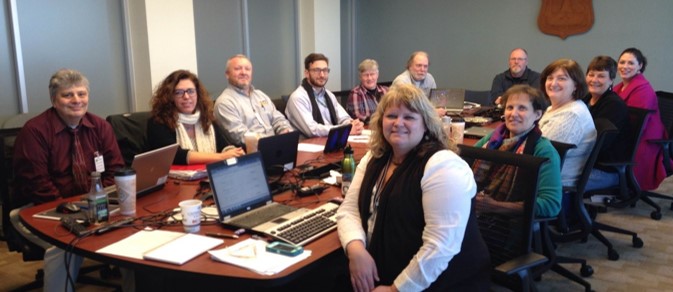
It has been said that the Forest Service Master Agreement is the gold standard of federal Collective Bargaining Agreements. But turning the lead of the Agency’s initial proposals into golden contract language has been a long and arduous journey for the eight members of the Forest Service Master Agreement negotiating team.
The Union negotiators embarked on the journey to negotiate their nationwide contract more than a year ago, starting with a bargaining preparation class in January, 2015 at the Winpisinger Center. Although the parties only opened 11 of the 45 articles in the agreement, they have been at the table 11 weeks during the intervening 13 months. Their work is still not done.
One article, Promotions and Details, remains for the parties to reach agreement. Nearly three weeks of negotiations have already been devoted to this topic, which has been a point of contention almost since the current contract was signed over five years ago.
USDA’s Cultural Transformation focus on hiring diversity has led to the increased use by the agency of noncompetitive hiring authorities to increase diversity, while leaving current workers feeling that they will never get a fair chance to compete for promotion. The Union applauds Agency efforts to increase diversity, but the use of hiring authorities that bring outsiders in over the heads of current workers has only served to create distrust and resentment towards these new hires. Furthermore, once these special hires join the bargaining unit, they quickly learn that they, too, can be passed over for promotion in favor of the next non-competitive hire candidate.
“The biggest problems we are facing are rooted in USDA Secretary Tom Vilsack’s Cultural Transformation and Hiring Reform initiatives,” said Chief Negotiator for the Union, Melissa Baumann. “These initiatives may work well and look good back in Washington, DC, but in a field-going organization with very small, rural workplaces, they fall flat and hurt the workers we represent.”
Similarly, USDA-mandated reforms related to time-to-hire are a serious sticking point for the parties. USDA’s direction that vacancy announcements only be open for 5 days, and never more than 10 may work well with an office-based workforce, but it does not work for a field-going organization where employees are spending consecutive weeks in the woods or fighting fire without the access to USAJobs needed to apply to vacancies that are open for only a few days.
Despite these challenges, earlier this month, the parties returned to working in an interest-based mode to see if putting positions aside would allow them to come closer to a resolution. While no language was drafted or exchanged during the discussions, the parties worked towards understanding the most important interests that need to be resolved to reach a workable agreement. The parties have scheduled one last negotiation session with a mediator later this month to continue to either reach such an agreement or move on to impasse proceedings.

The Forest Service Master Agreement negotiating teams pause for a picture. Pictured clockwise from far left: Andy Pizzi (facilitator), Janet Crowley (FS), Dave Stamey (NFFE BR), Chris Feutrier (FS), Melissa Baumann (FSC Secretary-Treasurer), Ken Dinsmore (FL251 President), Sean Thomas (FL5300 Vice-President), Liz Stowers (FS), Karen Mora (FSC Vice-President for the Rocky Mountains Region), Jane Cottrell (FS lead negotiator), Lisa Wolfe (FSC Vice-President for the Pacific Northwest), and Renee Crawford (FL1753 member).
Not pictured: Shawn Patterson (FSC Vice-President for the Civilian Conservation Corps).